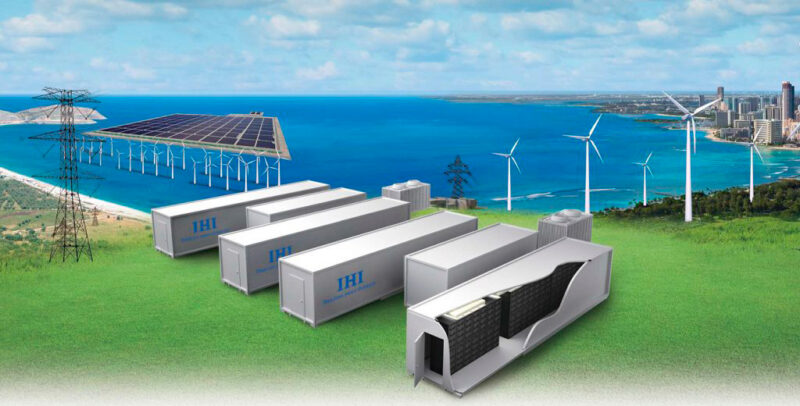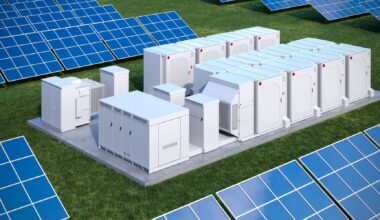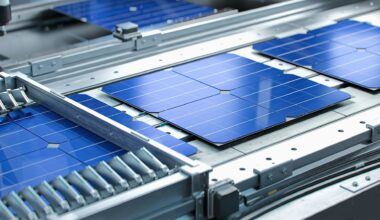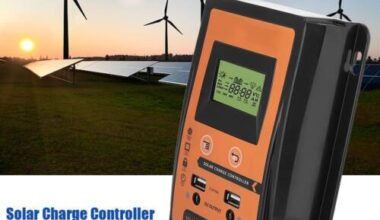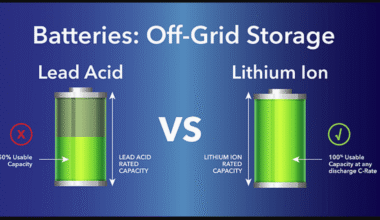Top 10 Benefits of Lithium Batteries for Solar Energy Storage
Introduction
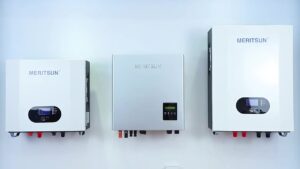
If you installed a solar array five years ago, you probably thought of storage as a nice-to-have—something to add when prices finally dropped. Fast-forward to 2025 and benefits of Lithium Batteries for Solar Energy have moved from “optional upgrade” to “core component.” Cycle life now tops 6,000 full cycles in mainstream lithium-iron-phosphate (LFP) packs, giving homeowners and businesses 20-plus years of daily service with negligible capacity fade. Meanwhile, average pack prices have plunged 75 % since 2010, settling around ₦230,000–₦460,000 ($200–$400) per kWh—a sweet spot where storage flips from expense to investment.
As a solar consultant who has specced more than 3 MWh of residential and commercial storage, I’ve watched the numbers—and the smiles—grow bigger every year. But price alone isn’t the whole story. The 2025 class of lithium batteries packs smarter electronics, safer chemistries, and grid-ready features that simply didn’t exist in 2020. In this deep dived article, you’ll learn the 10 benefits of Lithium Batteries that make Lithium Batteries for Solar Energy the undisputed champion of storage, plus step-by-step sizing tips, ROI hacks, and answers to the questions your installer wishes you’d ask.
1. Ultra-Long Cycle Life: 20 Years of Daily Autonomy(benefits of Lithium Batteries)
Typical lead-acid banks clock out after 1,000–1,500 cycles. Today’s LFP lithium modules exceed 6,000 cycles at 80 % depth-of-discharge (DoD)—and premium packs advertise 10,000. Stretch that over a single daily cycle and you’ve locked in two decades of service. Multiply your kWh price by years avoided on replacements and the total cost of ownership slashes by half compared to AGM or GEL.
Real-World Snapshot (benefits of Lithium Batteries)
Ngozi, a bakery owner in Enugu, swapped four 200 Ah tubular batteries for a 10 kWh LFP cabinet last February. Her freezer now rides through midnight blackouts without the morning “half-baked” disaster, and her accountant projects ₦3.2 million in saved replacements and diesel over ten years.
2. High Depth-of-Discharge Without Pain
Lead-acid chemistry punishes you for draining below 50 %. By contrast, most Lithium Batteries for Solar Energy comfortably deliver 90–100 % usable capacity daily. That effectively doubles the functional energy in the same physical footprint—a game-changer for roofs short on space or sites with high evening peaks.
3. Rapid Charge & Discharge for On-Demand Flexibility (benefits of Lithium Batteries)
Lithium’s internal resistance is a fraction of lead’s, allowing 1C (full-pack) charge and discharge rates without damage. That means:
-
Full recharge during a single sunny afternoon—crucial for tropical climates with fast cloud cycles.
-
Instant surge handling for water pumps, compressors, and appliance startups.
Pair a 5 kW inverter with a 5 kWh LFP stack and it can dump every watt in one hour if needed—ideal for backup mode during grid outages.
4. Round-Trip Efficiency That Leaves Lead in the Dust
Where lead-acid wastes 15–20 % of each charge in heat, lithium routinely hits 94–98 % round-trip efficiency. Less loss means more of your expensive PV harvest flows to actual loads. Over a 20-year horizon, that recovers megawatt-hours you would have literally lost to thin air.
5. Dramatic Cost Decline & Record ROI
Global gigafactories have slashed per-kWh prices by three-quarters in 15 years, with 2025 packs selling for $200–$400/kWh in volume. For a 10 kWh system in Nigeria, hardware that cost ₦4 million in 2018 now lands near ₦2 million installed. Factor in skyrocketing grid tariffs and diesel at ₦1,600/litre, and simple payback drops below four years for many households. (benefits of Lithium Batteries)
The Macro View (benefits of Lithium Batteries)
BloombergNEF projects the global stationary storage market will more than triple by 2030, and China’s CATL already supplies nearly 90 % of utility-scale capacity. Scale breeds cheaper cells, which feed cheaper home batteries—an upward spiral that favors adopters.
6. Modular, Space-Saving Designs

Gone are the plywood racks of car-sized batteries. Today’s Lithium Batteries for Solar Energy arrive as stackable 5–15 kWh modules you can wall-mount like a suitcase or slide into a server-rack cabinet. Modular form factors mean: (benefits of Lithium Batteries)
-
Install what you can afford now, add more later without replacing the entire bank.
-
Slim vertical stacks that reclaim floor space.
-
Weighted-average aging—new modules blend with old, unlike series-wired lead strings where one weak cell drags the team.
7. Tropical Resilience: Wide Temperature Window
Nigeria and similar climates test any battery. Lithium chemistries such as LFP tolerate –10 °C to 55 °C operating temperatures, with built-in heaters for colder highland nights. Intelligent BMS throttling prevents abuse, while external enclosures keep packs within spec even inside metal gatehouses that roast at noon.
8. Smart BMS & Remote Monitoring
Every 2025 lithium pack ships with a Battery Management System that balances cells, logs state-of-charge, and speaks MODBUS/TCP, CAN, or WLAN. Homeowners open a phone app to view real-time graphs, schedule charging for daylight, or export CSVs to crunch ROI in Excel. Installers diagnose anomalies remotely—less downtime, fewer truck rolls, happier customers.
9. Safety Leap: From Cobalt Fires to Stable LFP and Solid-State Horizons (benefits of Lithium Batteries)
Early cobalt-rich NMC cells earned a bad rap for thermal runaway. Enter lithium-iron-phosphate: phosphate bonds anchor oxygen atoms, making LFP far less prone to combustion. Meanwhile, R&D labs from Seoul to Silicon Valley are pushing solid-state lithium batteries that replace flammable liquid electrolytes entirely, promising even safer, higher-density storage.
10. Grid-Ready Features: VPPs, EV Integration, and Beyond
Utilities worldwide are piloting Virtual Power Plants (VPPs) that aggregate thousands of residential packs to shave peak demand and earn bill credits for owners. Lithium Batteries for Solar Energy already come with firmware hooks for future grid services—think frequency response, demand charge mitigation, or even vehicle-to-home (V2H) swaps when your next EV doubles as a 60 kWh backup.
Step-by-Step Guide: Sizing & Integrating Lithium Batteries for Solar Energy (benefits of Lithium Batteries)
Step 1: Map Your Daily Load & Autonomy Goal
Add up typical kWh usage between sunset and sunrise, then multiply by the days of autonomy you want (24–48 h for urban Nigeria with grid outages, 72 h for off-grid cabins).
Step 2: Pick Chemistry for the Job
-
LFP for longevity and safety.
-
NMC if you need maximum energy density (tight closets, mobile rigs).
-
Solid-state (early adopters) if budget allows and you crave bleeding-edge specs.
Step 3: Confirm Inverter Compatibility
Match nominal voltages (48 V common), communication protocols, and charge limits. Many hybrid inverters now auto-detect popular brands.
Step 4: Design for Expansion
Install racking and breaker capacity for 30-50 % future growth. Today’s 10 kWh may become 20 kWh once you add an EV.
Step 5: Optimize Software Settings
Enable time-of-use scheduling where discos offer night-time import rates, and set reserve-SoC thresholds (e.g., 20 %) so the battery never hits zero in a blackout.
Monetization & ROI Tips (benefits of Lithium Batteries)
-
Tap Net Metering 2.0—export midday excess and buy back cheap at night, cycling within safe DoD for profit.
-
Join a VPP pilot—earn ₦40–₦70/kWh for demand response events (check with Enugu Disco or Lagos Eko).
-
Bundle with efficient loads—swap that power-hungry freezer for A+++ rated units and shrink required capacity by 15 %.
-
Affiliate play—bloggers, add referral links to top battery brands; commissions often hit 5 %.
Maintenance Best Practices (benefits of Lithium Batteries)
-
Keep firmware updated—manufacturers push BMS tweaks that can add hundreds of cycles.
-
Dust the cooling vents monthly; airflow matters in dusty harmattan seasons.
-
Audit capacity annually via app logs; a 2–3 % yearly fade is normal for LFP.
-
If you’re in a salty coastal zone, choose IP65-rated enclosures to fend off corrosion.
Read Also: Lithium vs Tubular Batteries: Which Is the Best Energy Storage Solution for 2025? – Expert Tips
FAQ (benefits of Lithium Batteries)
Q1. Are Lithium Batteries for Solar Energy safe during Nigeria’s extreme heat?
Yes. LFP packs operate safely up to about 55 °C. A shaded outdoor cabinet and BMS temperature cut-offs protect the cells.
Q2. How many hours can a 10 kWh pack power a typical three-bedroom home?
With average evening loads of 2 kW, expect roughly five hours of full autonomy—or all night if you stagger usage.
Q3. What’s the warranty on 2025 lithium storage systems?
Most vendors now offer 10-year or 6,000-cycle warranties, whichever comes first. Some premium brands stretch to 15 years.
Q4. Can I add lithium batteries to an existing lead-acid system?
Technically yes if the inverter supports a mixed bank, but best practice is to separate chemistries or upgrade the whole bank to avoid charge-profile conflicts.
Q5. Will solid-state batteries replace LFP in home storage soon?
Not overnight. Early solid-state packs remain pricey, but expect niche deployments in late 2025 with broader rollout post-2028.
Conclusion: Future-Proof Your Solar Investment Today
Lithium Batteries for Solar Energy tick every box that matters in 2025—longevity, efficiency, safety, and now cost. Whether you’re dodging nightly blackouts in Lagos or optimizing demand charges in London, a right-sized lithium bank locks in energy independence and financial upside for decades.
Ready to level-up your array? Get a tailored quote for a 48 V LFP cabinet today and start banking the sunshine you already paid for. Your panels are working hard—let the perfect battery make every photon
